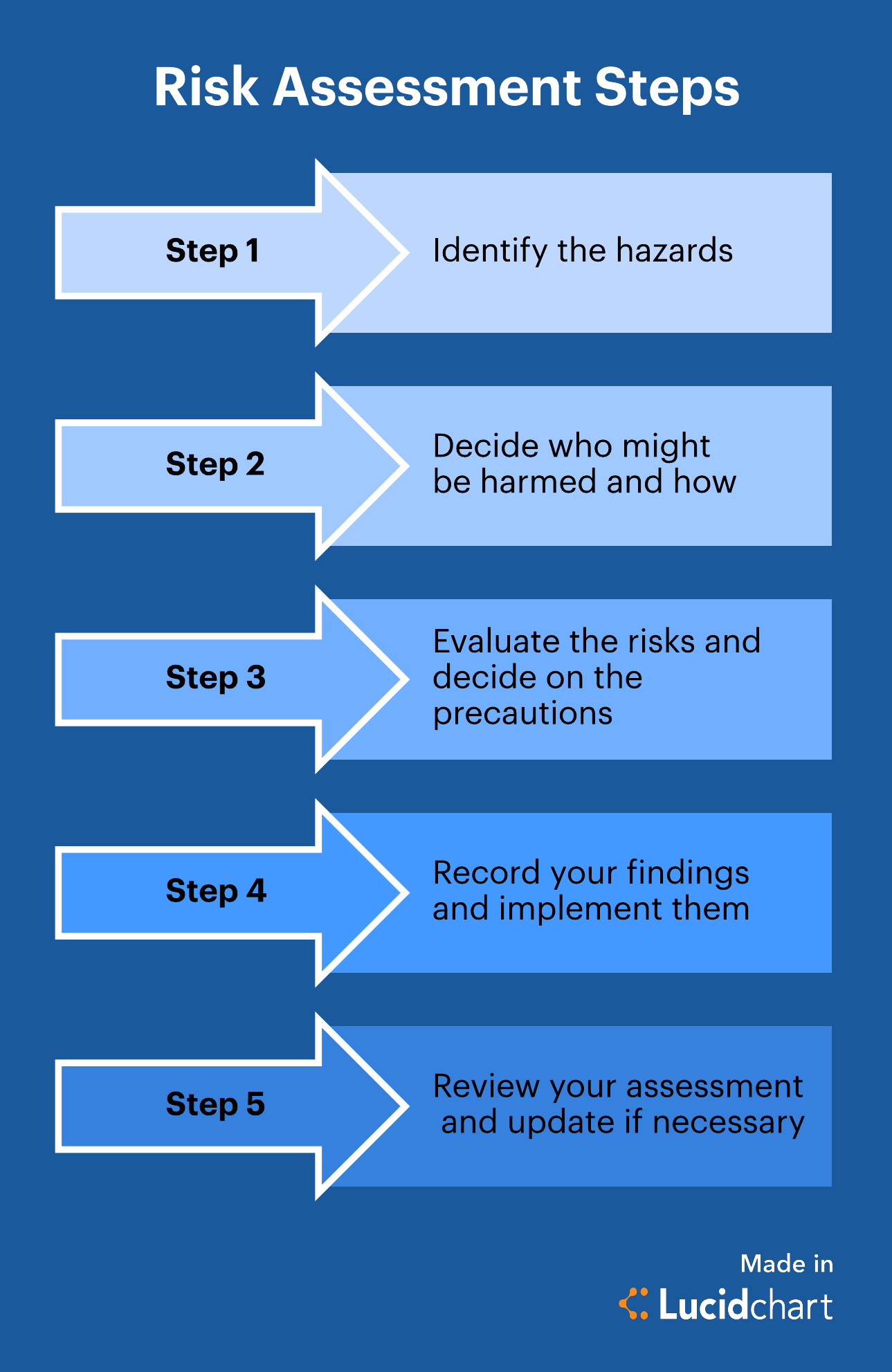Tools of risk assessment 1Epidemiology-Human exposure and disease and bias 2. Identify common workplace hazards.

A Complete Guide To The Risk Assessment Process Lucidchart Blog
The Risk Assessment asks five basic questions which the participants must answer.

. There are generally three major questions which are asked when conducting a risk assessment. 1 What is the hazard. Write Your Answer Post Your Answer.
Demiologists and risk assessment experts advise that there may still. Your organization should conduct risk assessment in a systematic manner. A risk assessment is performed in 5 steps or stages.
A business impact analysis BIA is the process for determining the potential impacts resulting from the interruption of time sensitive or critical business processes. Step 2 - Dose-Response Assessment The risk assessors gather information to determine the numerical relationship between exposure and effects. Fundamental applications of risk assessment to be addressed include 1 determining the current status of information security in the target environment s and ensuring that associated risk is managed accepted mitigated or transferred according to policy and 2 assessing risk strategically.
Hazard identification the process of finding listing and characterizing hazards. While the environmental occurrence of these contami- following land application of biosolids over a 3-year period and found nants is usually low μg kg1 down to sub ng kg1 toxicologists epi- that biosolids reduced runoff and increased surface retention of rainfall. Risk assessment the overall process of hazard identification risk analysis and risk evaluation.
A risk assessment is a systematic process of evaluating the potential risks that may be involved in an activity. Do not require special audit attention. The units of assessments are the biological species subspecies or populations or ecological entities habitats ecosystems etc and the risk are often related to human actions and interventions threats and pressures.
Step 3 - Exposure Assessment. A risk assessment is a vital element for health and safety management and its main objective is to determine the measures required to comply with statutory duty under the Health and Safety at Work Act 1974 and associated regulations by reducing the level of incidentsaccidents. There are numerous hazards to consider.
Involve routine high-volume transactions. How likely is the harm to occur. Risk assessment the overall process of hazard identification risk analysis and risk evaluation.
The four steps in the Risk Assessment process are. Risk assessment is the name for the three-part process that includes. These risks often a.
What hazards exist that may cause harm. Hazard identification the process of finding listing and characterizing hazards. A financial costs of the predicted risk B identification of the hazard C dose-response assessment D assessment of the exposure E characterization of the risk a financial costs of the predicted risk 45.
Involve items with lower levels of inherent risk. Clinical trials-controlled human studies limited toxicology aims at guarding the public from dangerous chemical exposures. How severe would the harm be.
Risk analysis a process for comprehending the nature of. Review previous accident and near-miss reports. The CSA Standard Z1002 Occupational health and safety - Hazard identification and elimination and risk assessment and control uses the following terms.
2 Are the people really exposed to the hazard. 1 Hazard identification 2 Dose response evaluation 3 Exposure assessment 4 Risk characterization. The risk management process involves a series of actions like stepping stones each leading to the next and each important to your risk management program.
Identify hazards Survey the workplace and look at what could reasonably be expected to cause harm. The risk assessors examine whether a stressor has the potential to cause harm to humans andor ecological systems and if so under what circumstances. Check manufacturers or suppliers instructions or data sheets for any obvious hazards.
A risk assessment is a process to identify potential hazards and analyze what could happen if a hazard occurs. The steps of risk management in order are as follows. In an audit of a non-issuer nonpublic company the auditors identify significant risks.
Toxicology-Animal studies extrapolation 3Cellular studies-Ames test animal cell studies 4. Biodiversity Risk Assessments evaluate risks to biological diversity specially the risk of species extinction or the risk of ecosystem collapse. Perform risk assessment collaboratively as a team effort involving different stakeholders and always taking into account their unique knowledge and views.
Risk assessment involves all of the following except.

Risk Assessment Matrix Providing Colored Risk Categories Plus Observed Download Scientific Diagram

5 Steps For Assess Your Fire Risk And Plan Fire Safety Fire Risk Assessment Fire Safety Assessment Checklist

0 Comments